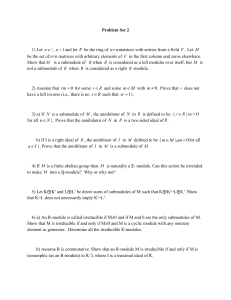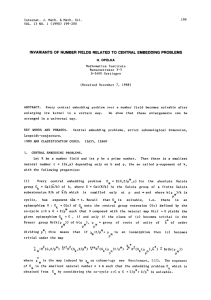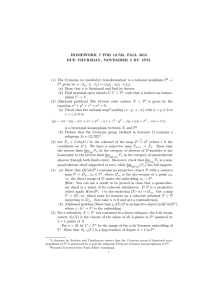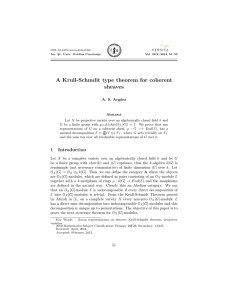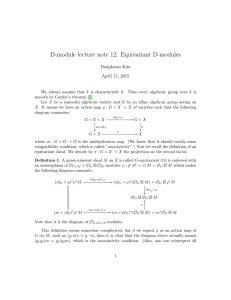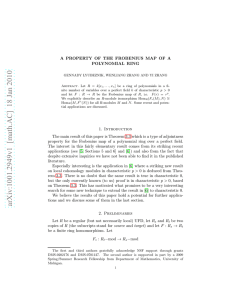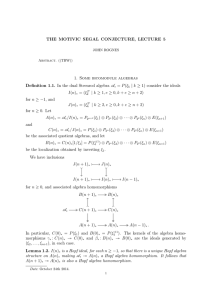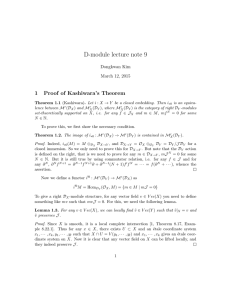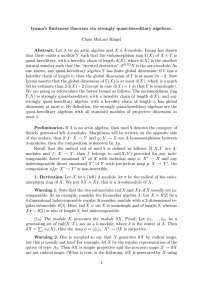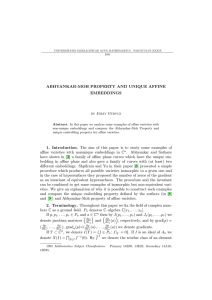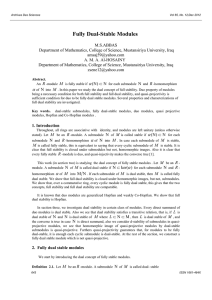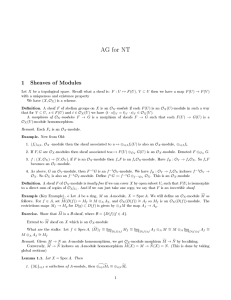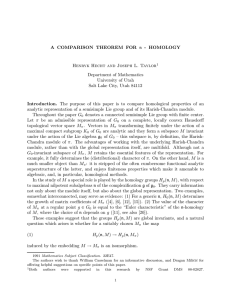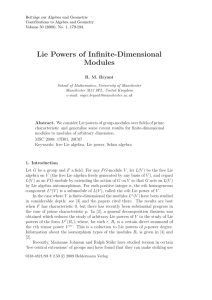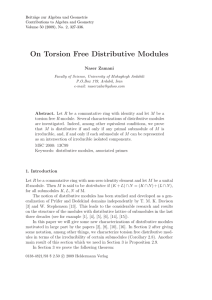18.769: Algebraic D-modules. Fall 2013 Instructor: Pavel Etingof
advertisement
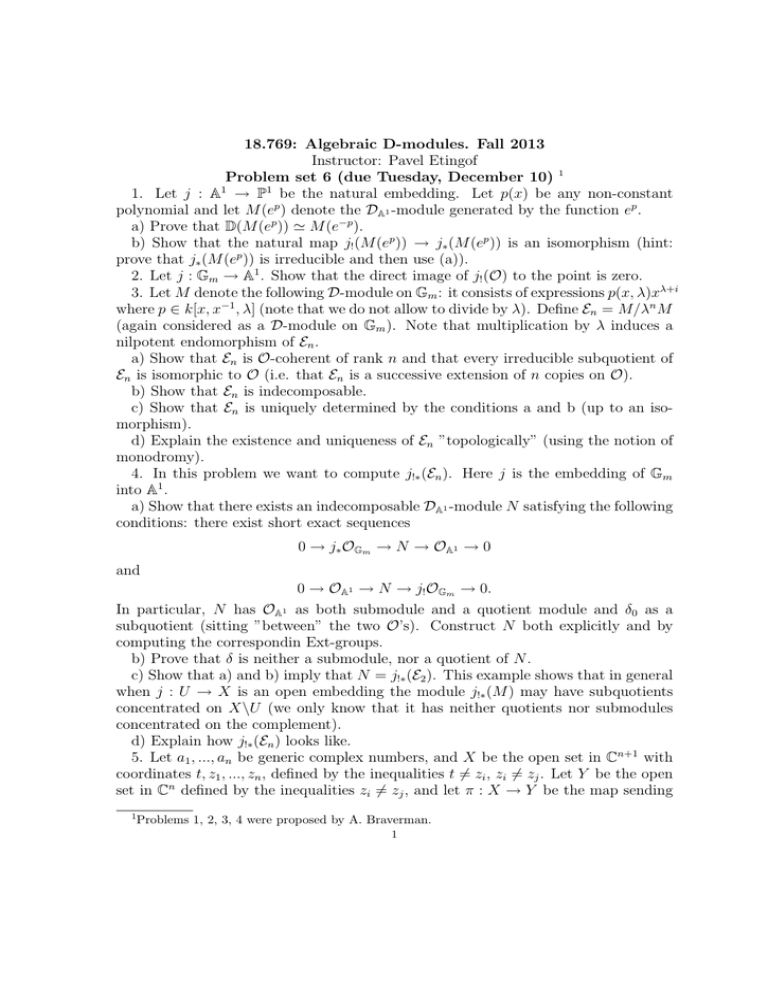
18.769: Algebraic D-modules. Fall 2013 Instructor: Pavel Etingof Problem set 6 (due Tuesday, December 10) 1 1 1. Let j : A → P1 be the natural embedding. Let p(x) be any non-constant polynomial and let M (ep ) denote the DA1 -module generated by the function ep . a) Prove that D(M (ep )) ' M (e−p ). b) Show that the natural map j! (M (ep )) → j∗ (M (ep )) is an isomorphism (hint: prove that j∗ (M (ep )) is irreducible and then use (a)). 2. Let j : Gm → A1 . Show that the direct image of j! (O) to the point is zero. 3. Let M denote the following D-module on Gm : it consists of expressions p(x, λ)xλ+i where p ∈ k[x, x−1 , λ] (note that we do not allow to divide by λ). Define En = M/λn M (again considered as a D-module on Gm ). Note that multiplication by λ induces a nilpotent endomorphism of En . a) Show that En is O-coherent of rank n and that every irreducible subquotient of En is isomorphic to O (i.e. that En is a successive extension of n copies on O). b) Show that En is indecomposable. c) Show that En is uniquely determined by the conditions a and b (up to an isomorphism). d) Explain the existence and uniqueness of En ”topologically” (using the notion of monodromy). 4. In this problem we want to compute j!∗ (En ). Here j is the embedding of Gm into A1 . a) Show that there exists an indecomposable DA1 -module N satisfying the following conditions: there exist short exact sequences 0 → j∗ OGm → N → OA1 → 0 and 0 → OA1 → N → j! OGm → 0. In particular, N has OA1 as both submodule and a quotient module and δ0 as a subquotient (sitting ”between” the two O’s). Construct N both explicitly and by computing the correspondin Ext-groups. b) Prove that δ is neither a submodule, nor a quotient of N . c) Show that a) and b) imply that N = j!∗ (E2 ). This example shows that in general when j : U → X is an open embedding the module j!∗ (M ) may have subquotients concentrated on X\U (we only know that it has neither quotients nor submodules concentrated on the complement). d) Explain how j!∗ (En ) looks like. 5. Let a1 , ..., an be generic complex numbers, and X be the open set in Cn+1 with coordinates t, z1 , ..., zn , defined by the inequalities t 6= zi , zi 6= zj . Let Y be the open set in Cn defined by the inequalities zi 6= zj , and let π : X → Y be the map sending 1 Problems 1, 2, 3, 4 were proposed by A. Braverman. 1 (t, z1 , ..., zn ) toQ(z1 , ..., zn ). Let L be the O-coherent D-module on X generated by the function ψ = ni=1 (t − zi )ai . (a) Compute π∗ (L). Namely, show that π∗ (L) is an O-coherent D-module on Y of rank n − 1, which is a trivial vector bundle on Y , and calculate the corresponding Gauss-Manin connection on this bundle. (You will obtain the simplest nontrivial case of the so called Knizhnik-Zamolodchikov equations). (b) Provide integral formulas for flat sections of π∗ (L) (using Pochhammer loops). 2
